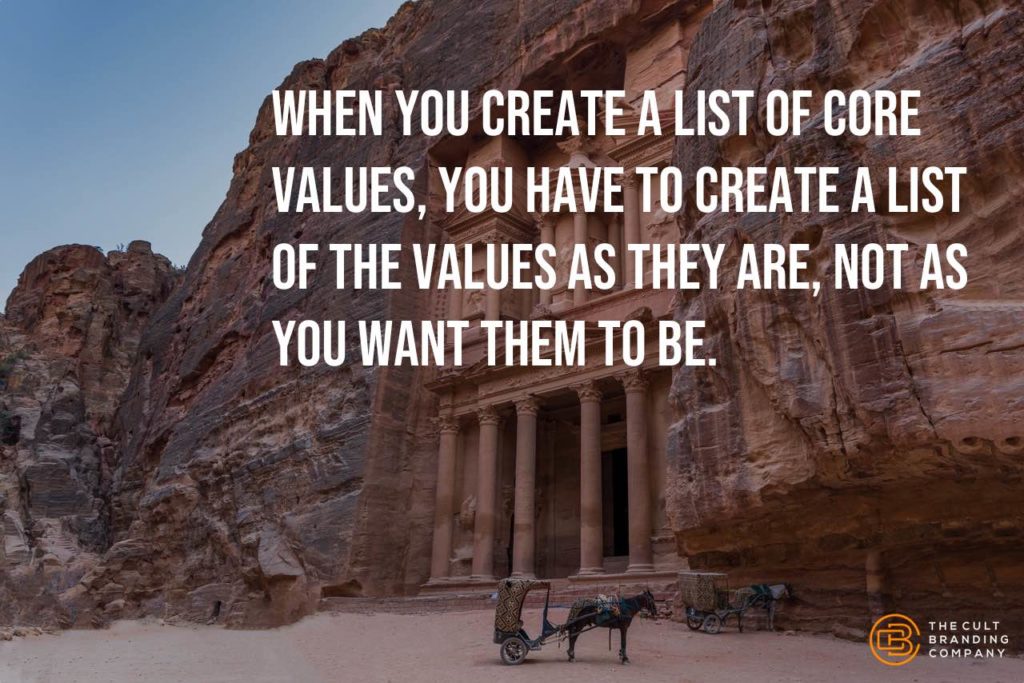
Perhaps the most popular corporate exercise of the last decade is creating a set of core values, those beliefs that form the foundation of the organization.
Unless this is done by the founder early on in the organization’s life— when the organization is close to a blank slate—chances are the list created by executives aren’t really core values.
These lists usually end up being the way the executives think they want people to behave and not the values that are actually guiding day-to-day behavior.
At their heart, true core values are the beliefs that guide behaviors. The values become internalized to the point of habit. They guide the way people naturally react to situations.
The problem with just creating a list of core values that are aspirational is that you can’t just impose culture in situations where one already preexists. That just doesn’t work. It becomes near impossible when you also ignore the core values that are already operating in the day-to-day behavior of an organization.
There’s nothing wrong with having values that you aspire to. But, you have to know which behaviors you’re trying to replace and you have to actively create situations to reinforce the new behavior over the old behavior.
When you create a list of core values that doesn’t accurately reflect the real core values of an organization, they won’t just take over. They may take over in some situations, but when times get tough people will default to the ways they’ve always behaved—the core values that exist deep within the organization—because that’s what they’re comfortable doing.
Core values are what you’re supposed to be willing to uphold in spite of any difficulty. And, values that aren’t rooted deep in the habitual behavior of an organization aren’t going to be used when times get tough or uncertain.
What ends up happening after most of these core values exercises is that the company is operating under two sets of values: the core values created during a corporate exercise and the real core values that are actually guiding the behavior of the company.
This can be dangerous.
In situations where a corporation speaks out in defense of their values and against an employee’s actions, chances are that the employee wasn’t really acting out of line with the company’s core values. The employee’s behavior probably was out of line with the list created during the corporate exercise, but they were likely acting in line with the true core values that guide the day-to-day behaviors within the organization.
When you create a list of core values, you have to create a list of the values as they are, not as you want them to be. If one of the values is something you don’t want the company to stand for, then you have to actively create behaviors and habits throughout the organization to replace it.
